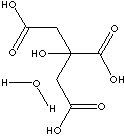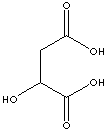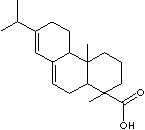CITRIC ACID, MONOHYDRATE
PRODUCT IDENTIFICATION

H.S. CODE
TOXICITY
CLASSIFICATION
Anticoagulant, Chelating agent, Preservative, Hematologic
EXTRA NOTES
PHYSICAL AND CHEMICAL PROPERTIES
AUTOIGNITION
NFPA RATINGS
REFRACTIVE INDEX
100 C
EXTERNAL LINKS & GENERAL DESCRIPTION
USA.gov - Citric acid
Wikipedia Linking - Citric acid
Google Scholar Search - Citric acid
U.S. National Library of Medicine - Citric acid
PubChem Compound Summary - Citric acid
IPCS INCHEM - Citric acid
Drug Bank - Citric acid
KEGG (Kyoto Encyclopedia of Genes and Genomes) - Citric acid
ChEBI (http://www.ebi.ac.uk/chebi/) - Citric acid
NCBI (http://www.ncbi.nlm.nih.gov/) - Citric acid
Material Safety Data Sheet - Citric acid
Human Metabolome Database - Citric acid
Hazardous Substances Data Bank - Citric acid
EPA - Substance Registry Services - Citric acid
Local:
Citric Acid (2-Hydroxy-1,2,3-propanetricarboxylic acid, in IUPAC naming) is a colourless crystalline organic compound belong to carboxylic acid family. It exists in all plants (especially in lemons and limes) and in many animal tissues and fluids. In biochemistry, it is involved in important metabolism of almost all living things; the Krebs cycle (also called citric acid cycle or tricarboxylic acid cycle), a part of the process by which animals convert food to energy. Citric acid works as a preservative ( or as an antioxidant) and cleaning agent in nature. It is commercially obtained by fermentation process of glucose with the aid of the mold Aspergillus niger and can be obtained synthetically from acetone or glycerol. It can be used as an sour taste enhancer in foods and soft drinks. The three carboxy groups lose protons in solution; resulting in the excellent pH control as a buffer in acidic solutions. It is used as a flavouring, stabilizing agent and acidulant (to control acidity) in food industry, in metal-cleaning compositions as it chelates metals. Citric acid is available in forms of anhydrous primarily and in monohydrate, the crystallized form from water. The hydrated form will be converted to the anhydrous form above 74 C. Citrate is a salt or ester of citric acid. Citrates are formed by replacing the acidic one, two, or all three of the carboxylic hydrogens in citric acid by metals or organic radicals to produce an extensive series of salts, esters, and mixed (double) salts. Cirrates are used in food, cosmetics, pharmaceutical and medicine industries as well as in plastic industry; nutrient or food additives having functions of acidity regulator, sequestering and stabilizing agent, antioxidants synergist, firming agent; anticoagulant for stored whole blood and red cells and also for blood specimens as citrates chelate metal ions and saline cathartics, effervescent medicines; high boiling solvent, plasticizer and resin for food contact plastics.
EXAMPLES OF NATURALLY OCCURRING CARBOXYLIC ACIDS
(excluding fatty acids)
|
Pyruvic acid |
Lactic Acid |
Cholic acid |
Nicotinic acid |
|
|
|
|
|
|
metabolic intermediate |
metabolic intermediate |
from bile |
vitamin B |
|
| |||
|
Citric acid |
Malic Acid |
Biotin |
Abietic acid |
|
|
|
|
|
|
in plants |
in fruits |
cell growth factor |
pine rosin |
APPLICATIONS: Food, Beverages, Flavour enhancer, Colouring, Preservative, Detergents, Cleaners, Pharmaceuticals, Cosmetics, Industrial and Chemical processing
BIBLIOGRAPHY
FCC/USP/BP
APPEARANCE
ASSAY
99.5% ~ 101.0%
WATER
7.5% ~ 9.0%
4 NTU
150ppm max
CHLORIDE
50ppm max
IRON
5ppm max
Pass test
350ppm max
200ppm max
ARSENIC
3ppm max
HEAVY METALS (as Pb)
10ppm max
25kgs in bag
HAZARD OVERVIEW
GHS (Globally Harmonised System) Classification: Eye irritation. Hazard statements: Causes serious eye irritation.
GHS
Warning
PICTOGRAMS

HAZARD STATEMENTS
H319
P STATEMENTS
P305 + P351 + P338
![]()
RISK PHRASES
36
SAFETY PHRASES
26







